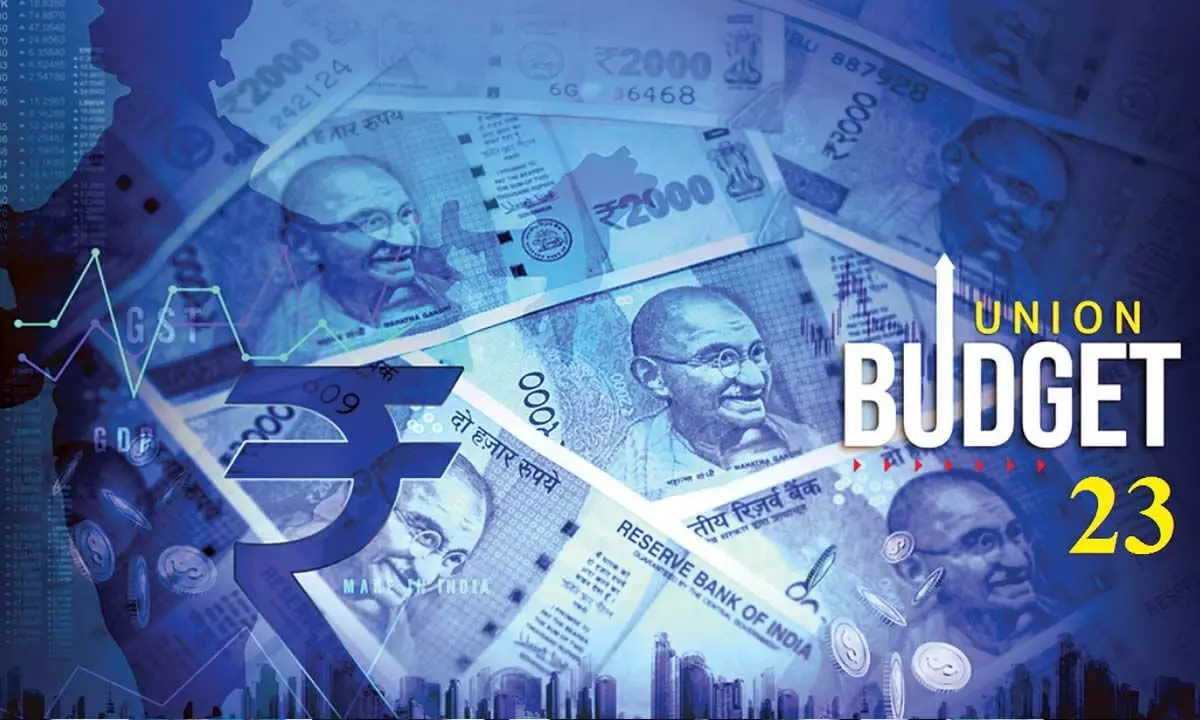Three priority areas for Union Budget 2023
Every Budget is a balancing act but the upcoming one, being prepared under challenging circumstances, is bound to test the dexterity of policymakers.
image for illustrative purpose

Every Budget is a balancing act but the upcoming one, being prepared under challenging circumstances, is bound to test the dexterity of policymakers.
Budgetary assumptions had become outdated even before this fiscal started, as is wont in a milieu of extreme uncertainty. Although the Omicron wave proved to be mild, the Russia-Ukraine war, and high and broad-based inflation in most parts of the world, including India, came as rude shocks bloating the subsidy bill significantly beyond budgetary assumptions.
But thanks to a higher nominal gross domestic product (GDP) growth rate and improved tax compliance, the fiscal deficit as a percentage of GDP may remain closer to the budget number, with borrowings on target.
The macroeconomic backdrop for the forthcoming budget is no less challenging.
The good news is that COVID-19 has stopped disrupting the economy and, as a result, growth is getting more broad-based, with increasing contribution of services.
However, the global economic environment has turned gloomier, given the spectre of recession, with high inflation and sharp rate hikes in advanced countries amid worrying geopolitical developments.
That, together with the fact that domestic rate hikes impact with a lag, means slower GDP growth the year ahead. We expect real GDP growth of 6 percent next fiscal, compared with an estimated 7 percent this fiscal, and nominal GDP growth of 10.5-11 percent versus an estimated ~15 percent this fiscal.
Slower nominal growth would mean slower growth in tax revenue, which will reduce the fiscal space for spending as the government needs to stay on the committed glide path of reducing the fiscal deficit.
The pandemic had pushed the fiscal deficit beyond comfort level, and it needs to be brought down gradually to 4.5 percent by 2025-26, as envisaged by authorities.
Focus on fiscal consolidation during a pre-election year will also enhance the credibility of the government. This will also complement the steps taken by the Reserve Bank of India (RBI) to restrain inflation particularly the sticky core inflation which is sensitive to demand conditions.
While reducing the deficit, the government also needs to switch expenditures from the bloated subsidy bill towards capital spending. A softening of crude, fertiliser, and domestic food prices will make this re-switching easier.
One of the highlights of the government's fiscal policy in the last two years has been a notable step-up in Union government spending on infrastructure creation.
Public investment has higher multiplier effects on the economy, which play out over the medium run, and crowd in private investments.
The private sector is also primed for scaling up investments, backed by healthy balance sheets and cash reserves, and low leverage. However, economic uncertainty is holding animal spirits back.
One way to address this is by incentivising private investments till the time uncertainty fades. The Production Linked Incentive (PLI) scheme has been one such initiative, which has fast-forwarded private investments in critical areas such as electronics, pharmaceuticals, and solar energy.
The Budget should, therefore, consider offering such benefits for enhancing private corporate investments in strategically important areas with a clear sunset clause. This will spur a broad-based revival of private investment.
Climate Change has begun to play out in the form of rising temperatures and frequent extreme weather events such as droughts, cyclones, heat waves, and floods that endanger life and property around the world.
The Intergovernmental Panel on Climate Change (IPCC) 2022 report identifies India as highly vulnerable to Climate Change.
First is food security, as the immediate impact of Climate Change is on food production and its prices. A recent case in point is wheat crop, which was hit by an extreme heatwave in March that trimmed production and flared up prices.
To mitigate the impact on food economy, the Budget can focus on measures such as increasing allocations/incentivising development of extreme weather resistant crops, warehousing for storage, food processing for cutting wastage, and smoothening price volatility.
Over the past few decades, the services sector has been the key growth driver for India. But that is changing as we shift to a growth strategy based on manufacturing and infrastructure development — both of which are energy/carbon intensive.
That said, while the larger firms, which incidentally enjoy healthy balance sheets, are better positioned to manage this transition, the smaller ones are more vulnerable and lack resources. For the record, the country has around 65 million units, micro, small and medium enterprises, and these have significant carbon footprint.
Thus, fiscal steps to support the small enterprises transition to a lower-carbon footprint will be an important part of the green transition. One of these could be enhanced access to green finance for these firms.
To be sure, every Budget is a balancing act. But the upcoming one, being prepared under challenging circumstances in a pre-election year, is bound to test the dexterity of policymakers.
Dharmakirti Joshi is Chief Economist, CRISIL. Views are personal, and do not represent the stand of this publication.

